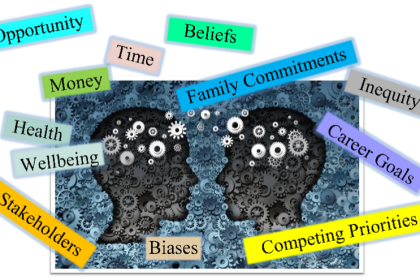
By Jeanicka Rhey https://www.linkedin.com/in/jeanicka-lanzarote/
Effective leadership has become pivotal in driving teams and organizations toward success. In the midst of today’s intricate workplace challenges, leaders who possess emotional intelligence (EI) stand out as catalysts for positive change.
Emotional intelligence shapes leaders who inspire, motivate, and foster united, high-achieving teams.
This article explores the transformative power of emotional intelligence in leadership, breaking down its core elements, highlighting its significant impact on various leadership aspects, and offering practical insights on how to harness EI to become a more effective and influential leader.
Understanding Emotional Intelligence (EI)
Emotional Intelligence (EI) involves the skill of identifying, comprehending, and effectively handling both personal emotions and the emotions expressed by others. It comprises several interconnected components that collectively contribute to effective leadership.
These include
- Self-awareness: Understanding one’s emotions requires recognition and acceptance
- Self-regulation: The skill of managing and controlling emotional responses
- Empathy: Being able to relate to and comprehend others’ feelings
- Motivation: The drive to achieve goals with enthusiasm
- Social skills: The adeptness in building and maintaining relationships.
These components form the foundation of emotional intelligence, enabling leaders to navigate complex interpersonal dynamics and make informed decisions.
- Self-awareness empowers leaders to identify their strengths and weaknesses, enhancing authenticity and approachability.
- Self-regulation ensures leaders remain composed under pressure, fostering an environment of stability.
- Empathy cultivates understanding and trust among team members, which is essential for collaborative problem-solving.
- Motivation propels leaders and their teams toward ambitious goals, fueling sustained effort.
- Social skills enable leaders to communicate effectively, resolve conflicts, and create cohesive teams, improving overall performance.
The Impact of Emotional Intelligence on Leadership
1. How EI Contributes to Building Trust and Rapport
Emotional intelligence lays the groundwork for trust by allowing compassionate leaders to connect with their teams more deeply. When leaders exhibit empathy and understanding, team members feel valued and heard, fostering trust and loyalty.
For instance, a leader who listens to employee concerns and shows genuine care will likely build stronger rapport, resulting in increased collaboration and open communication.
2. EI’s Role in Conflict Resolution and Problem-Solving
Emotional intelligence equips leaders with the skills to navigate conflicts constructively. Leaders who understand their own emotions and those of others can approach conflicts with empathy and objectivity.
This facilitates the identification of underlying issues and the formulation of solutions that consider everyone’s perspectives. For example, a manager who addresses a team conflict by acknowledging the emotions and encouraging open dialogue can reach a resolution satisfying all parties involved.
3. Enhancing Communication Through Emotional Intelligence
Effective communication hinges on emotional intelligence, as leaders must convey information while considering the emotional impact on recipients. Leaders with high emotional intelligence can adapt their communication style to suit different audiences, leading to clearer messages and reduced misunderstandings.
A leader who recognizes the anxieties of team members during organizational changes can tailor their communication to alleviate concerns and maintain a sense of stability.
Inspiring and Motivating Teams with High EI
Leaders who exhibit emotional intelligence inspire their teams by setting an example of enthusiasm, determination, and resilience. Their ability to connect with team members on an emotional level fosters a sense of purpose and belonging, leading to higher engagement and productivity.
For instance, a leader who demonstrates an unwavering commitment to a challenging project can motivate team members to persist and excel despite obstacles.
Developing Your Emotional Intelligence as a Leader
1. Identifying Your Current EI Strengths and Weaknesses
Effective development of emotional intelligence begins with self-awareness. Leaders can use self-analysis resources to gauge their emotional intelligence status, pinpointing strong points and potential areas for enhancement.
2. Techniques for Improving Self-Awareness and Self-Regulation
Mindfulness practices, journaling, and seeking feedback from peers can enhance self-awareness. Self-regulation can be refined through techniques like deep breathing and reframing negative thoughts.
3. Cultivating Empathy and Understanding Others’ Emotions
Leaders can actively listen, ask open-ended questions, and put themselves in others’ shoes to nurture empathy. A leader who takes time to understand an employee’s challenges and responds with empathy can create a supportive atmosphere, fostering trust and collaboration.
4. Fostering Intrinsic Motivation and Enthusiasm
Leaders can lead by example, displaying a genuine passion for their work. Leaders can boost intrinsic motivation by connecting tasks to a higher purpose and recognizing achievements.
5. Building Effective Social Skills and Interpersonal Relationships
Regular team-building activities, networking events, and coaching programs can help leaders refine their social skills. A leader actively engaging in team-building exercises fosters a positive group dynamic, enhancing collaboration and camaraderie.
Practical Strategies for Using Emotional Intelligence in Leadership
1. Valuing Others’ Perspectives and Emotions
Active listening encompasses wholeheartedly focusing on the speaker, recognizing their sentiments, and seeking clarity through questions. This strategy demonstrates respect and fosters open communication. A leader who actively listens during team meetings can make team members feel valued, increasing trust and idea-sharing.
2. Balancing Honesty and Sensitivity
Leaders can provide feedback that focuses on both strengths and areas for improvement. This approach shows emotional intelligence by considering the recipient’s emotions while delivering feedback.
For instance, a leader who offers constructive feedback in a private setting and highlights accomplishments before addressing areas for growth can promote a positive learning environment.
3. Navigating Disagreements with Emotional Intelligence
Leaders can mediate conflicts by addressing the underlying emotions and encouraging open dialogue. By remaining neutral and empathetic, leaders can guide teams toward resolutions. For example, a manager who facilitates a conflict resolution session by acknowledging the emotions of both parties and guiding them toward a compromise showcases emotional intelligence.
4. Demonstrating Emotional Intelligence in Actions
Leaders can set the tone for their teams by modeling emotional intelligence. This entails regulating one’s emotions, handling stress with composure, and treating others with empathy. When a leader remains composed during high-pressure situations, team members are likelier to emulate this behavior, contributing to a positive and productive work environment.
5. Adapting Leadership Styles
Effective leaders adjust their leadership styles to accommodate the emotions and needs of individual team members. This flexible approach fosters a sense of belonging and support.
Conclusion
As organizations strive for innovation, collaboration, and sustainable success, embracing emotional intelligence cultivates thriving workplaces and propels leaders toward creating lasting positive impacts.
In a world where leadership is both an art and a science, harnessing emotional intelligence is an indomitable force, shaping leaders who inspire, connect, and lead with unwavering authenticity and influence.





